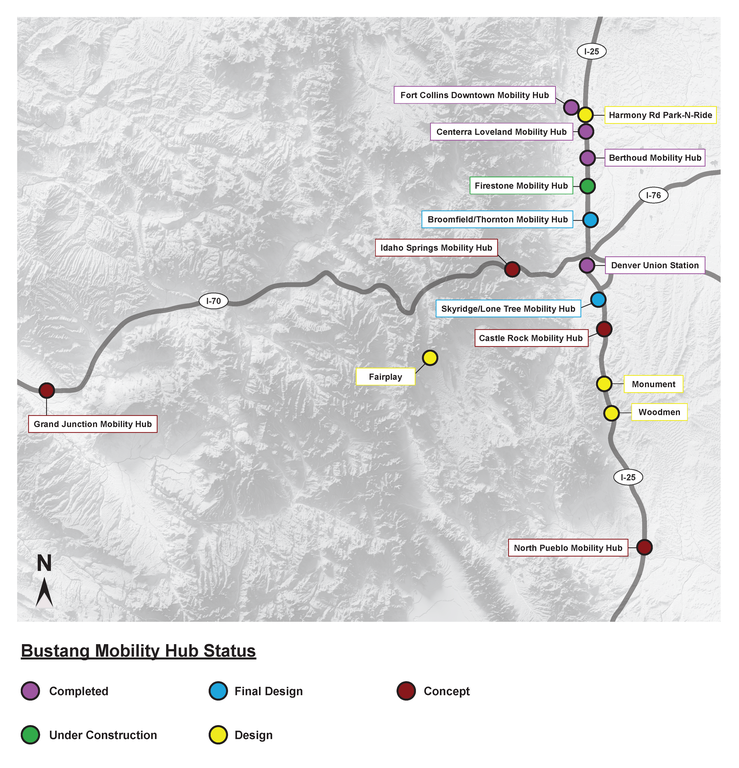Mobility Hubs
Mobility Hubs
To improve current regional bus services and rider convenience, the Colorado Department of Transportation (CDOT) is constructing a series of Mobility Hubs across Colorado, which will re-envision the traditional park-n-ride transit locations into centers of transportation activity and connectivity.
What is a Mobility Hub?
A mobility hub is a place where multiple modes of transportation (cars, regional bus services, bicycles, pedestrians, micro-mobility, public transportation, etc.) seamlessly integrate to allow for quick mode-to-mode / route-to-route transitions and efficient first- and last- mile connections.
They most often are activity centers that have shelters, real-time passenger information, and other technologies not typically found at a traditional park-n-ride. CDOT has prioritized mobility hubs as a statewide program since 2019 and are committed to expanding statewide bus transportation services.
Locations
CDOT’s Mobility Hubs will be located all along I-25 from Fort Collins to Pueblo and I-70 from Denver to Grand Junction and provide convenient Bustang express bus services to most of Colorado. Several of these hubs will replace existing park-n- ride stations while others will provide new connections. See the map below to view more details about the status and location of planned Mobility Hubs.

Complete
- Centerra Loveland Mobility Hub
- Berthoud Mobility Hub
- Fort Collins Downtown Mobility Hub
- Denver Union Station
- Firestone-Longmont Mobility Hub
Construction:
- Broomfield/Thornton Mobility Hub
- Skyridge/Lone Tree Mobility Hub
Final Design:
- Harmony Road Park-N-Ride
Design:
- Monument
- Woodmen
- Fairplay
- Grand Junction Mobility Hub
Concept:
- Castle Rock Mobility Hub
- North Pueblo Mobility Hub
- Idaho Springs Mobility Hub
The CDOT DTR Mobility Hub Program
Colorado has experienced significant population growth over the past decade and is projected to continue to grow and urbanize in the future, especially along the Front Range. The transportation options and infrastructure that were built in the 20th century to support the state will not meet the needs of Colorado’s future residents. As a result, the Colorado Department of Transportation (CDOT) and its partners continue to plan and implement high-quality transportation infrastructure and services that can accommodate Colorado’s changing needs – for which Mobility Hubs will play a critical role.
In 2019, CDOT made the policy decision to prioritize SB 17-267 funds for the development of mobility hubs across the state. The mobility hubs will be used to further enhance the Bustang, Bustang Outrider, and other interregional transit services that CDOT currently deploys. Increasing transit services across the state will, in turn, assist state initiatives to decrease air pollution, reduce vehicle miles traveled, and mitigate congestion along key travel corridors.
Locations for Mobility Hubs were determined through a comprehensive evaluation that began with the Regional Bus Network Plan – which identified that a Bustang stop should be located every 10 miles along the I-25 Corridor from Fort Collins to Pueblo, and every 30 miles between Denver and Grand Junction. Additionally, factors such as roadway geometry, travel patterns, regional connectivity, community support, and surrounding land uses were taken into account.
